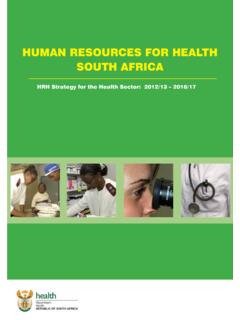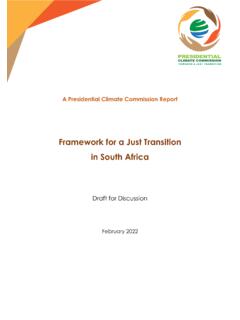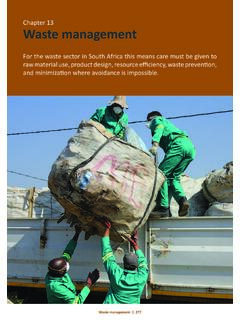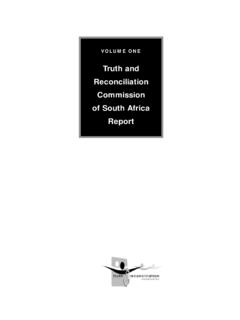Transcription of Inequality in South Africa: Nature, Causes and Responses
1 Inequality in South africa : Nature, Causes and Responses Stephen Gelb Inequality in South africa : Nature, Causes and responses1. DfID Policy Initiative on Addressing Inequality in Middle-income Countries Stephen Gelb The EDGE Institute, Johannesburg November 2003. The EDGE Institute, 2003. 1. The author is Executive Director, The EDGE Institute. Without implicating them in positions taken here, I. would like to thank for their comments on earlier drafts: Bridget Dillon, Richard Thomas, Kate Philip and others at DfID (Pretoria); Andy Mckay and others at ODI (London); Firoz Cachalia of the Gauteng Legislature; Ann Keeling, Alison Tierney and others in DfID (London); and participants in the DfID Inequality in Middle Income Countries workshop, London, Dec 4/5 2003.
2 I also thank Shireen Hassim for helpful discussions on many of the issues covered, and Phillipa Tucker and Owen Willcox for research assistance. DfID Inequality in Middle Income Countries: South africa Case Section 1. Introduction Speaking in South africa 's parliament in 1998 in the debate on the report of the Truth and Reconciliation Commission, (then-Deputy) President Thabo Mbeki argued that material conditions have divided our country into two nations, the one black, the other white. [the latter] is relatively prosperous and has ready access to a developed economic, physical, educational, communication and other infrastructure The second, and larger, nation of South africa is black and poor, [and] lives under conditions of a grossly underdeveloped infrastructure.
3 Neither are we becoming one nation..Unlike the German people [after unification in 1990] we have not made the extra effort to generate the material resources we have to invest to change the condition of the black poor more rapidly than is possible if we depend solely on severely limited public funds, whose volume is governed by the need to maintain certain macroeconomic balances and the impact of a growing economy. (Mbeki, 1998). This paper examines the nature of the divide which Mbeki pointed to between the two nations' and the reasons for the limited response to this divide during the post-apartheid era since 1994 at which he hints.
4 This paper argues that this response can be understood only through an historical analysis of the transition to democracy. Section 2. provides an overview of Inequality , poverty and economic growth in South africa and their trends during the past ten years. Section 3 briefly examines the historical roots of Inequality in colonial conquest and patterns of capitalist development resulting in the apartheid system. Section 4 argues that the democratic transition in 1994 emerged from a two-decade crisis' during which economic and social changes occurred which shaped both the form of the transition through negotiations as well as post-apartheid policy and institutions, which resulted from an accommodation between the ANC and business.
5 Section 5 spells out how policies, institutions and ideas in post-apartheid South africa reflect the outcome of the transition and have shaped the trends described in Section 2. Section 6 concludes by examining current approaches to addressing Inequality in South africa , and the constraints upon them. 1. DfID Inequality in Middle Income Countries: South africa Case Section 2. An overview of Inequality , poverty and growth in SA. This section examines the state of Inequality and poverty in SA today, describes how Inequality has changed over the decade since the democratic transition in 1994, and examines the composition of Inequality and poverty based on a number of horizontal indices including race, gender, region (province) and urban-rural location.
6 The historical origins of the situation described here are spelled out in the following section. The section also presents a range of indicators of economic growth and changes in economic structure, including output and employment. (i) Basic indicators. Table 1 presents basic demographic data for 1991 and The population growth rate from 1991 to 2001 was per annum. Table 1: South africa 's population 1991 2001. Total population (millions) Population groups as % of total: African 70 79. White Coloured 9. Indian 3 Source: Stats SA (2002c), ; (2003a), p10.
7 Table 2 presents development statistics for South africa relating to the Millennium Development Goals for various years in the early 1990s and early 2000s, the year indicated by the superscript. GDP grew at about per annum between 1990 and 2001, less than the population growth rate, so that GDP per capita declined slightly during this period. The Human Development Index remained constant between 1996. and 2000, while South africa 's rank in the UNDP's dropped from 61st (of 140 countries). to 111th (of 175 countries). Life expectancy has declined precipitously while infant mortality has increased substantially, both a consequence of the HIV/Aids pandemic.
8 It is estimated that of South africa 's population was HIV-positive in 2002 (HSRC, 2003, p46). The drop in the primary enrolment rate may also be linked to HIV/Aids and the increase in the number of Aids orphans in the country, estimated to be 660 000 in 2001 (World Bank, 2003b). The HIV/Aids pandemic is the major factor which has moved South africa backwards since 1990 in terms of Millennium Development Goals 2, 4, 5. and 6, those concerned with health and education. Three million people, 7% of the population, were living on less than $1 a day in 2000, and ten million people, 23% of the population, on less than $2 a day (World Bank, cited 2.)
9 The apartheid racial categories are necessarily used throughout this paper, but this should not be taken to constitute endorsement of the categories. 2. DfID Inequality in Middle Income Countries: South africa Case in Woolard, 2002). Bhorat (2003a) estimates that in 1999, 32% of households in South africa were below a poverty line of US$251 per month per household (1995 prices), equivalent to US$81 per month per individual. Using the same poverty line, the poverty gap3 was 13%. Table 2: South africa : Millennium Development Goals, early 1990s and post 2000.
10 Early 1990s Post-2000. 90. a. GDP per capita 1995, ZAR 14806 14554 02. b. GDP per capita 1995, US$ 4082 90 4013 02. c. GDP per capita, current PPP US$ 8282 90 9401 00. d. Human Development Index 96 00. e. Life expectancy at birth (years) 62 90 01. f. Under 5 mortality rate (per 1000 live births) 73 90 85 02. g. Maternal mortality rate (per 100 000 live births)4 150 92-98 90. h. Adult Literacy rate (% of people 15 & over) 02. i. Net primary enrolment rate (% of age group) 103 91 89 01. j. Urbanisation (% of population) 96 00. Sources: a, b: SA Reserve Bank, ; c, e, f, h, i: World Development Indicators; d.





